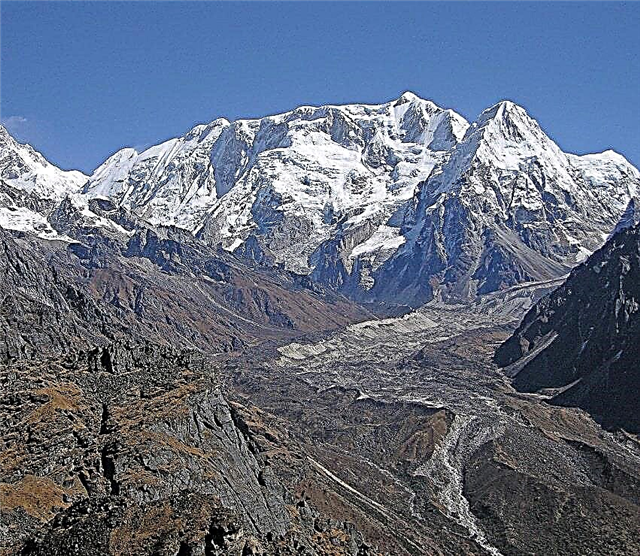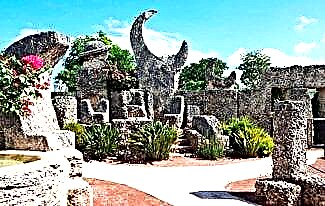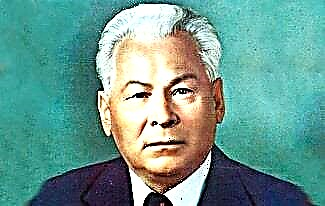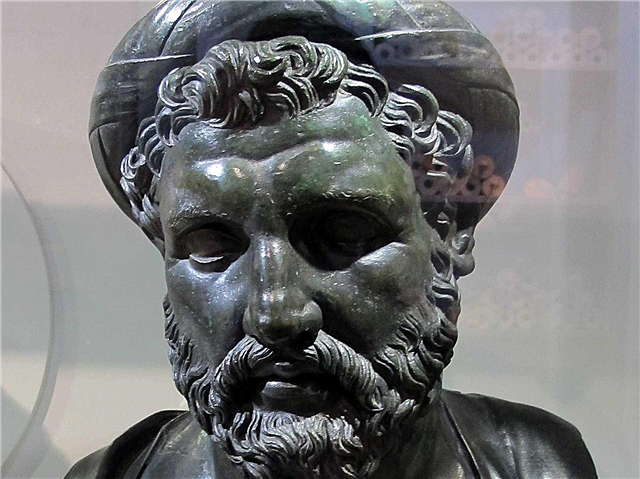Qasem Suleimani (Soleimani) (1957-2020) - Iranian military leader, lieutenant general and commander of the Al-Quds special unit in the Islamic Revolutionary Guard Corps (IRGC), designed to carry out special operations abroad.
Al-Quds, under the leadership of Soleimani, provided military support to the Hamas and Hezbollah groups in Palestine and Lebanon, and also played an important role in the formation of political forces in Iraq after the withdrawal of the US army from there.

Suleimani was an outstanding strategist and organizer of special operations, as well as the creator of the largest spy network in the Middle East region. He was considered the most influential and powerful figure in the Middle East, despite the fact that "no one heard anything about him."
On January 3, 2020, he was killed in Baghdad in a targeted US Air Force airstrike.
There are many interesting facts in the biography of Qasem Suleimani, which will be discussed in this article.
So, before you is a short biography of Qasem Suleimani.
Biography of Qasem Suleimani
Kassem Suleimani was born on March 11, 1957 in the Iranian village of Kanat-e Malek. He grew up and was brought up in a poor family of the farmer Hassan Suleimani and his wife Fatima.
Childhood and youth
After Kassem's father received a land plot under the Shah's reform, he had to pay a considerable loan in the amount of 100 tumans.
For this reason, the future general was forced to start working as a child in order to help the head of the family pay the entire amount of money.
After graduating from 5 classes, Qasem Suleimani went to work. He got a job as a laborer at a construction site, taking on any job.
After paying off the loan, Suleimani started working in the water treatment department. After some time, the guy took the position of an assistant engineer.
During that period of his biography, Kassem shared the ideas of the Islamic revolution of 1979. At the very beginning of the coup, he voluntarily became a member of the IRGC, which would later become an elite unit subordinate to the head of state.
After a month and a half of military training, Suleimani was instructed to establish water supply in the territory of Kerman.
The first military operation in the biography of Qasem Suleimani happened in 1980, during the suppression of the IRGC of Kurdish separatism in the northern and western regions of Iran.
Iran-Iraq War
When Saddam Hussein attacked Iran in 1980, Suleimani served as a lieutenant in the IRGC. With the beginning of the military conflict, he began to rapidly move up the career ladder, performing various tasks.
Basically, Kassem successfully coped with intelligence operations, obtaining valuable information for his leadership. As a result, when he was only 30 years old, he was already in charge of an infantry division.
Military service
In 1999, Suleimani participated in the suppression of a student uprising in the Iranian capital.
In the 90s of the last century, Kassem commanded the units of the IRGC in the territory of Kerman. Since this region was located near Afghanistan, the drug trade flourished here.
Suleimani was instructed to restore order in the area as soon as possible. Thanks to his military experience, the officer was able to quickly stop drug trafficking and establish control over the border.

In 2000, Kassem was entrusted with command of the special forces of the IRGC, the Al-Quds group.
In 2007, Suleimani nearly became the head of the IRGC after General Yahya Rahim Safavi was dismissed. The following year, he was appointed head of a group of Iranian experts, whose task was to find out the cause of the death of the head of the special services of the Lebanese Hezbollah group, Imad Mugniyah.
In the fall of 2015, Kasem led the rescue operation to find Konstantin Murakhtin, the downed Su-24M military pilot.

At the height of the Syrian civil war in 2011, Qasem Soleimani ordered Iraqi rebels to fight on the side of Bashar al-Assad. During that period of his biography, he also assisted Iraq in the fight against ISIS.
According to the international news agency Reuters, Suleimani flew to Moscow at least four times. There is an assumption that in 2015 it was he who convinced Vladimir Putin to start a military operation in Syria.
It is worth noting that, according to the official version, Russia intervened at the request of Assad.
Sanctions and evaluations
Qasem Soleimani was on the UN "black list" of suspects of involvement in the development of Iran's nuclear and missile programs. In 2019, the US government recognized the IRGC, and therefore the Al-Quds special forces, as terrorist organizations.
In his homeland, Suleimani was a true national hero. He was considered a talented tactician and organizer of special operations.
In addition, over the years of his biography, Qasem Suleimani has created a large-scale agent network in the Middle East.

An interesting fact is that ex-CIA officer John Maguire in 2013 called the Iranian the most influential and powerful figure in the Middle East, despite the fact that "no one has heard anything about him."
Representatives of the Russian Ministry of Defense claim Suleimani's great contribution to the fight against ISIS in Syria.
In Iran, al-Quds and its leader were accused of brutally suppressing demonstrations in 2019.
Death
Qasem Soleimani died on January 3, 2020, in a deliberate US Air Force airstrike. It soon became clear that American President Donald Trump was the initiator of the operation to eliminate the general.
This decision was made by the head of the White House after the attack on December 27, 2019 on the US Iraqi base, where American soldiers were stationed.
Soon the American president publicly announced that the basis for the decision to eliminate Soleimani was the suspicion that he "intended to blow up one of the US embassies."
A number of reputable media outlets reported that the general's car was blown up by rockets launched from a drone. In addition to Qasem Suleimani, four more people were killed (according to other sources, 10).
Suleimani was identified by the ruby ring he wore during his lifetime. Nevertheless, the Americans are planning to carry out a DNA test in the near future in order to finally make sure of the death of a serviceman.
A number of political scientists are convinced that the assassination of Qasem Soleimani has led to an even greater aggravation of relations between Iran and America. His death caused a great resonance throughout the world, especially in Arab countries.

Iran promised to take revenge on the United States. The Iraqi authorities also condemned the American operation, and the US State Department issued a message asking all American citizens to immediately leave Iraqi territory.
Funeral of Qasem Suleimani
The funeral procession of Suleimani was led by the spiritual leader of Iran, Ayatollah Ali Khamenei. Over a million of his compatriots came to say goodbye to the general.
There were so many people that in the course of the crush that began, about 60 people were killed and over 200 were injured. In connection with the tragic death of Suleimani, a three-day mourning was declared in Iran.
Photo by Qasem Suleimani













